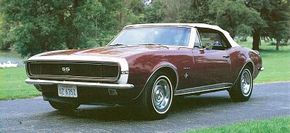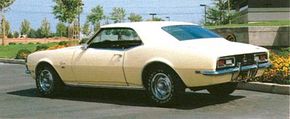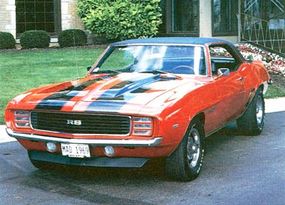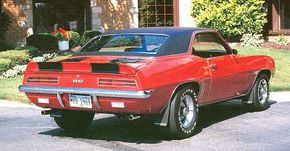It's commonly believed that the 1967-1969 Chevrolet Camaro was just a me-too response to Ford's Mustang, but it just isn't so. Though quite by accident, Chevrolet's Corvair Monza had uncovered the huge market for sporty compacts that Mustang exploited. What's more, General Motors had contemplated a Mustang-type car better than two years before the Ford's stupendous mid-1964 launch.
Advertisement
Nevertheless, some General Motors executives felt their restyled, second-generation Corvairs would stem the stampede to Mustang-style "ponycars." Yet however handsome, the '65 Monza and its kin retained an air-cooled, rear-engine design that was just too quirky to sell well against the orthodox, $2,500 Falcon-based Mustang. And because it remained technically unique within the Chevrolet family, Corvair was a costly bother to build. So, even as the redesigned '65 models were debuting, GM managers were deciding that the Corvair would be allowed to fade away.
Meantime, Chevy rushed to complete a conventional front-engine replacement as a direct Mustang-fighter. Called Camaro, it predictably followed Ford's formula down to an identical wheelbase, under-skin components liberally borrowed from a "family" compact (here, the Chevy II), standard front bucket seats, rakish long-hood/short-deck styling, and numerous options that eventually numbered 81 factory items and 41 dealer-installed accessories.
A key early decision was to combine unit construction with a front subframe that cradled the engine/transmission package on large rubber mounts to minimize noise, vibration, and harshness. Front suspension involved the usual wishbones and coil springs, but with the springs between the arms instead of atop the upper ones, which benefited handling. Unfortunately, the rear suspension had cheap "Mono-Plate" single-leaf springs that allowed severe axle tramp in hard acceleration with the planned V-8 engines. Because this went undiscovered until the 11th hour, V-8 Camaros had rear traction bars for '67, then added staggered shocks, though neither was a genuine cure. Easy rear-end bottoming was another flaw.
Keep reading to learn about the styling and sales success of the 1967-1969 Chevrolet Camaro.
For more information on cars, check out:
- Classic Cars
- Muscle Cars
- Sports Cars
- Consumer Guide New Car Search
- Consumer Guide Used Car Search
Advertisement



